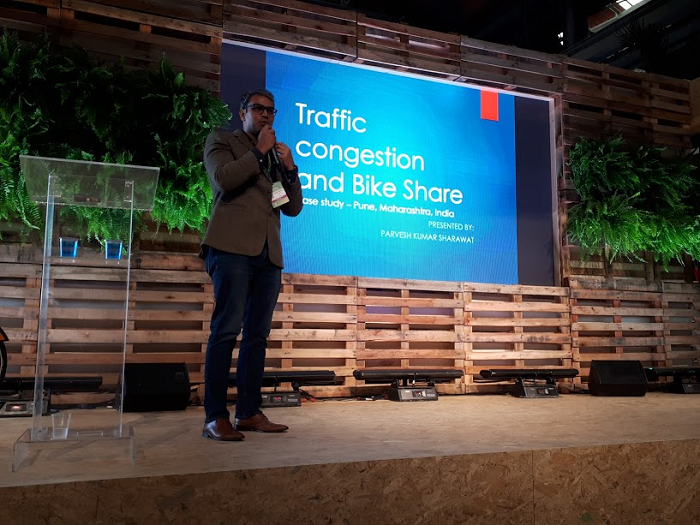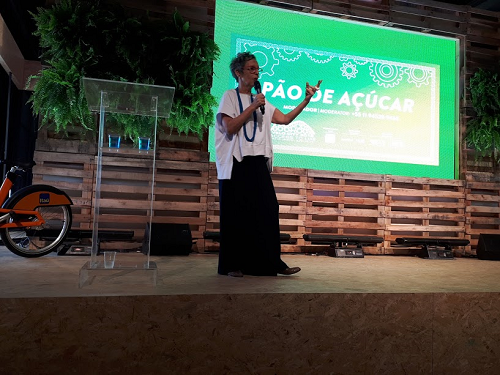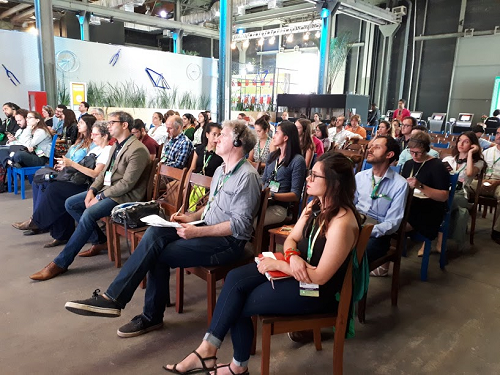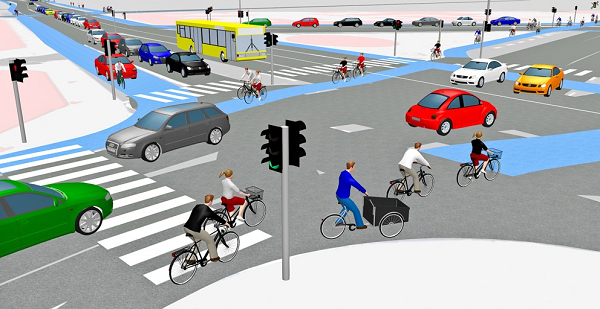
Velo-city day 1: Stuck in Traffic
Raquel Rolnik is an architect and an urban planner, with over 30 years of experience in planning and urban land management. Based in Sao Paulo, she is a professor at the Faculty of Architecture and Urbanism of the University of Sao Paulo. As an urban planner she is dealing with mobility as a system.
In her presentation Raquel Rolnik presented the total failure of car oriented models in cities. The car oriented model is a failure, mainly because of environmental issues and its dependency on energy and oil. Even worse, there is something very wrong with the profound relationship between a mode of transport and an urban development model. This model does nothing to promote liveable cities.
We are stuck in traffic everywhere. And the solutions that are being proposed are more of the same: wider streets, more pathways and more tunnels. They promote and induce a model which is totally car dependent and does not allow for more sustainable and healthier modes of transport.

Parvesh Kumar, Traffic congestion and bike share: a case study approach.
Bike sharing and traffic induction. How bike sharing can help reduce traffic congestion in the city.
Access to public transit (PT) system is an important determinant of choosing the PT system. In addition to good walking and cycling infrastructure to access transit, cities across the globe are investing in bike share systems to enhance PT coverage and attractiveness. The benefits of inter-modal integration improving transit ridership that makes the entire transport chain low carbon, is of interest to developed countries and emerging economies alike.
Many cities in India are now planning Bike share (BS) projects. While the social benefits of BS are incontestable, we still need to understand the economic value of investing in bike share for our cities to make them financially feasible. The paper presents an evaluation framework using validated indicators to analyze the benefits of integrating bike share systems with transit systems in India. It presents a case study (Pune city) and uses substantial city level primary data to illustrate how integrating bike share with public transit systems (Bus system in Pune) can realize these benefits for the city and users.
The analysis has shown significant reduction in pollution (1 to 78%), congestion (-1 to 20%), fuel consumption (1 to 80%), parking demand (1 to 54%) and investment in MV infrastructure (1-53%) in the city, if the BS system is available for short trips (0-5km) and integrated with existing public transit system. The evaluation framework can enable projectization and thus investment in bike share systems in India, which hitherto have eluded the typical financial feasibility models of transport projects.

David Uniman, Movilidad Bogota: Becoming a World Class Cycling City: Bogotá
David Uniman is an urban planner specialised in mobility and he is also the Bicycle Manager for the city of Bogotá.
Bogotá has a very ambitious goal: it wants to become one of the world’s leading cycling capitals. Movilidad Bogota wants to achieve a modal shift for cycling of 10 percent. Today the modal share of cycling in Bogotá is 5 percent. The city of Bogotá is also investing significantly in bicycle infrastructure. They are building fast cycling connections, including a cycle superhighway, to better connect the different neighbourhoods of the City by bike. Bogotá will also build 11 cycle bridges to overcome some of the city’s major avenues in order to increase cycling safety. One of the recently realised cycle bridges already has 3000 cyclists per hour. The city will also improve its bicycle parking facilities. In short: Bogotá has a very ambitious goal but is working very hard to turn it into a reality.

Carolien Ruebens, ECF. Increase Walking and Cycling to decrease Congestion.
Congestion is especially problematic for society because the impact seems so clear – I’m moving more slowly than I want, and the solution seems so easy – just widen the road. The full consequences of these “solutions” (e.g., induced traffic, economic and environmental costs of widening roadways) don’t come to mind when people are stressed out about getting to work on time.

Figure 1: http://www.traffic-inside.com/2014/02/13/creating-the-worlds-best-city-for-cyclists/
In her presentation Carolien Ruebens challenged the common perception that improvements for one mode hurt another mode. First, many cities have been able to redesign streets to reduce physical space for automobiles without increasing congestion (e.g., New York). The European funded FLOW project (H2020) has challenged decision makers’ perception that walking and cycling make urban congestion worse. How? By improving the integration of cyclist and pedestrian behaviour in transport modelling software, such as the VISSUM/ VISSIM software developed by PTV. By modelling walking and cycling measures in the FLOW partner cities, the FLOW project partners were able to provide quantifiable proof to their local decision makers about the neutral and in most cases even positive impact on congestion. The FLOW project has also developed a Quick Facts publication, which is available in different European languages that provides convincing quantified arguments about other Cities that were able to decrease their congestion by implementing walking and cycling measures.
Contact the author
Recent news!
Upcoming events
Contact Us
Avenue des Arts, 7-8
Postal address: Rue de la Charité, 22
1210 Brussels, Belgium









